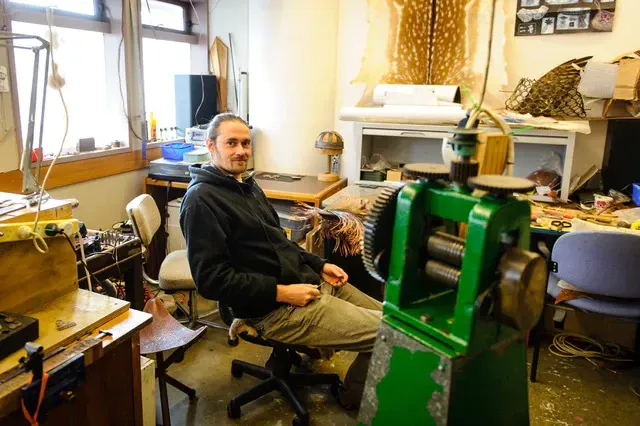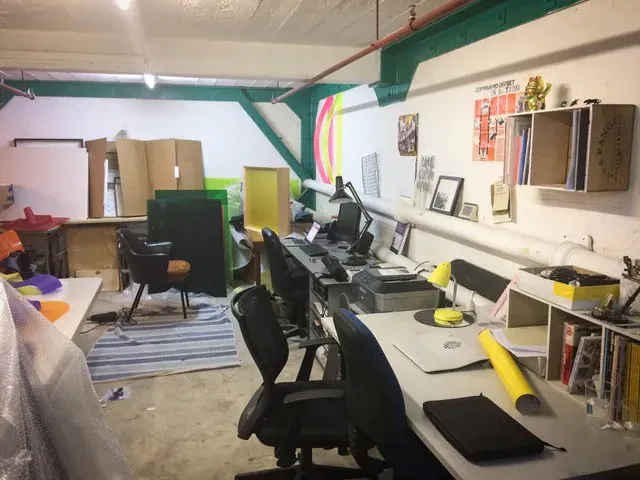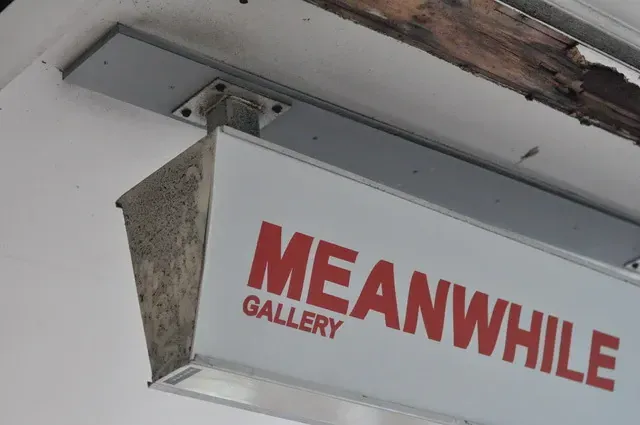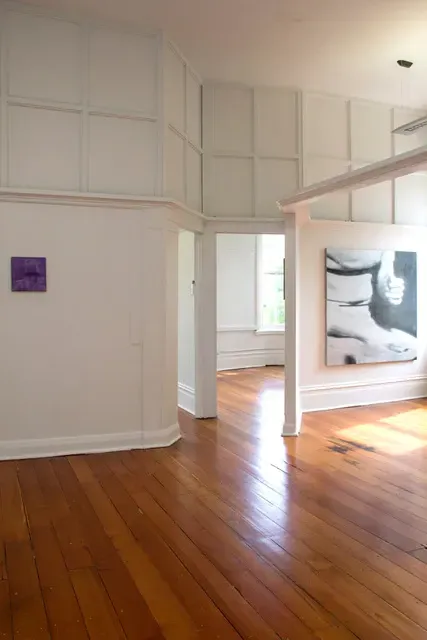Working in the City
Written by
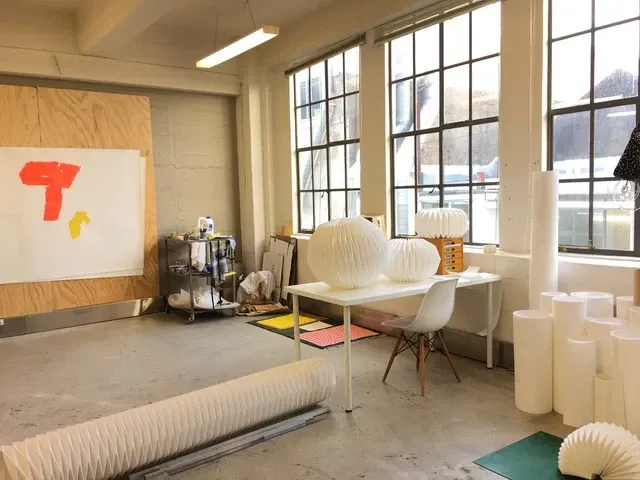
When an artist works in a CBD they contribute to the wellbeing of that CBD, like any other worker. So what happens to a city and its artists when they can no longer afford to work there?
At least in Wellington the last year has seen a quite remarkable growth in the number of artist studios in the CBD. Four separate collectives have emerged: Play_station and Meanwhile, which are also artist-run exhibition spaces, Tory Street Studios and a set of studios in what was gallery 30 Upstairs. The majority of artists have graduated with fine arts degrees in recent years. There is growth reflective of that of Massey University’s College of Creative Arts. Still, at a time when the property market has been showing signs of recovery, an ever escalating housing crisis and intense jitters for CBD owners following the November 2016 earthquake this is an interesting development.
My involvement in the arts was coloured by being surrounded in the early 1990s by artists living and working in central Auckland. In the recession that followed the 1987 stock market crash many older buildings were able to be tenanted by artists and arts publishers around Queen Street. This was important for these artists in finding community and developing their work. Pockets remain, particularly around K Road, though that’s shifting, with a new rail link opening in Mercury Lane in 2023.
Moving to Wellington in the mid 1990s I found a city where artists of all kinds were developing their work in collective studios and found presentation spaces. Many have gone on to be cultural leaders. Visits to Christchurch revealed the same, something now much lamented after the 2010 and 2011 quakes.
Artists’ engagement with their cities have long been made in relationship to property cycles, and considered part of a gentrification process. The artists come in, create work and warm property that attracts the wealthy, and eventually that wealth moves in. Robbie Whyte wrote a blog on the Wellington situation in May last year for the service I co-run Urban Dream Brokerage in Wellington. He was responding to an excellent 2016 documentary, There Goes The Neighbourhood published online by Frieze. Critic Jonathan P. Watts took “a cross-generational look at how artists have survived in London from the 1970s until the present.” One year on from that blog however, the situation in Wellington is remarkably different. Artists have been taking thing into their own hands.
Toi Poneke
Back in 2005 upper Cuba Street residents approached the Wellington City Council seeking mitigation against the displacement of creative energy caused by an inner-city bypass and increasing property prices. Council were also well aware of how artists throughout the CBD had lost studios and space due to property pressures. At the very time they were crowning the city ‘creative capital’.
Toi Poneke Arts Centre was the result, offering 30 studio spaces (go here for more information, they have a waiting list), alongside a gallery for Wellington-based artists, office spaces, rehearsal rooms, and community rooms. It’s a fine facility, proven by the relationships it is has built and the testament of the diverse range of artists who work there. You can feel the warmth when you step in the door. Arts centre administrator Jane Yonge has been working at Toi Poneke for a year: “In that time demand has increased a lot. I’m guessing this is partially due to the 2016 earthquake putting many spaces out of action, as well as the launch of our website.”
But artists like anyone don’t always make their community in this way. Toi Poneke suits those looking to break their isolation, or a bolthole. Fine arts graduates come to the city also in small flocks, or want to make space in the same more direct way other freelance workers do, without insulation from council. Studios with a unique vibe are also important meeting grounds between artists and their potential supporters.

Tory Street Studios
Back in that early 1990s recession, arts patron Michael Baker brought a former print factory building on Tory Street. Five years ago he enabled the establishment of 17 Tory Street, an “open source collective gallery” space, run collectively, which has been home to many groups, exhibitions, performances and events. It is a community.
Last year a further group of artists took studio space on the second floor in the wake of losing studios in Lyall Bay. Co-founder Kirsty Lillico had ironically been creating sculptural wall works out of old office carpets which playfully respond in their form to modernist architecture. Several of these were shown in City Gallery Wellington’s Demented Architecture exhibition in 2015 and hang in the studio foyer when I paid a visit.
There are nine artists with studios here, a mix of artists and small creative businesses. They include Pivot Print, a small scale Risograph print studio, a great support for fellow artists, who have done a terrific job as designers on a new look Salient magazine this year. Resident Josephine Jelicich has new work hanging in a new gallery space at the back of design store Precinct 35 on Ghuznee Street, next to Bowen and Hamish McKay galleries until 23 May.
Operating since September there are 11 spaces here plus, says Lillico “a generous amount of social space and a foyer that we use for events and as a test space for the resident artists.” They make decisions collectively but Lillico and fellow artist Ruth Thomas-Edmond are the leaseholders. They are open to approaches from artists.
“It is motivating to work alongside other exhibiting artists who are working towards deadlines and pursuing opportunities,” says Kirsty. “We provide practical support to one another, share costs and have a professional environment where one can invite clients / colleagues / curators / dealers.”
“For those that also maintain jobs, and work in the CBD, having such a central location makes it easier to schedule studio time. We’re close to suppliers, libraries, and galleries, and it’s possible to slip off to an exhibition opening or lecture after studio. That connection between one's own practice and engaging with others is pretty important in creating a dialogue or 'scene'.”

play_station
Council have been busy in recent years injecting life into some of Wellington’s laneways and one of the most dramatic changes in the last year has been to wee Egmont Street, parallel with rejuvenated Eva Street (once base for artist collective Russian Frost Farmers). All designer pot plantings, cafes and barbers, a la hipster Melbourne, a really welcome addition is a basement artist run space with studios, play_station, founded by artists Hugh Chesterman, Tom Hammar, Tyler Jackson, BENT and Kane Laing.
Currently play_station is self-funded through the five original board members occupying the studios as “a small benefit of paying a lot of money for the space to run as an ARI,” says Tyler Jackson. They collectively take on roles to run the space with a new sixth board member.
Four of them moved straight from their studios at Massey to here, signing a lease from September 2016 to September 2017. They’re currently extending that until December to keep the exhibition programme running for the full year and want to renew the lease into 2018.
“The studios are hugely beneficially to the running of our space, as often we will be working in the studios and can catch up on any issues or ideas for the gallery,” says Tyler. “Individually, it is great to be able to have a space where you can go to and be able to work with all your materials, and be immersed in other artists’ activity in the studios.”

Meanwhile
Meanwhile is an artist run space that began with great energy late last year at 35 Victoria Street and has this year moved to Level 2/99 Willis Street. The busy exhibition programme (at least five shows since March) is complemented by having eight studio artists with room says co-founder Jordana Bragg for two more. The large proportion of the artists are recent Massey graduates, but they’re open to enquiries from anyone (meanwhile.wgtn@gmail.com). Like play_station many previously had studio space at school.
All the studio artists' pay rent and internet weekly, with power divided among everyone monthly. Jesse Bowling and Bragg manage, with support from the studio artists and the local art community.
“A studio space provides each artist a space to exclusively consider, produce and store their work,” says Jordana. “Being surrounded by other artists makes for an energetic, supportive and critical environment. With the studios and gallery located in the CBD there is also an opportunity for large scale exposure and ease in conducting studio visits and meetings.”

30 Upstairs
Between 2012 and 2016 property owner and art patron Malcolm Brown, working with manager and curator Jhana Millers and others, ran a gallery space and residency programme upstairs on Courtenay Place. The gallery is much missed. With strong networks it mustered a programme of over 100 exhibitions of emerging artists of excellence from around New Zealand and Australia, who didn’t have dealer representation in the capital. Many, now we simply cease to see the work of.
Instead the space has been turned over to artist studio space, helmed by artists Emily Hartley-Skudder and partner Hamish Coleman (who recently collaborated for a show at Ramp Gallery, Hamilton). There are seven artists here, a mix of existing friends and those met through a call out online. There's one recent grad, and mostly emerging artists, with some a bit more established, says Emily. Painting, drawing, mixed media and one illustrator.
“We had always thought about how amazing the light was and how great it would be for studios since it was already divided into smaller 'rooms',” Emily says. “Hamish and I bit the bullet and signed the lease for the space, desperately hoping we'd be able to fill it with artists since we couldn't afford the whole rent ourselves. We are stoked to have been able to repurpose the gallery space and keep it in the Wellington art community.”
Hamish and Emily manage the money and ask for one month’s advance rent plus bond to move in, and then people pay rent weekly.
“It's a bit of a dream since leaving art school to be in a shared studio and have a network of other artists around you. In some ways it recreates that support and motivation a lot of us experienced and maybe struggled to find outside of art school or in a new city. A lot of us have worked in isolation on and off and although it can be helpful at times, it is so valuable to be around other artists you trust that can critique your work when it needs it. In the future we'd like to put the idea of group critiques out there for those who'd like to participate.”
There is one studio currently available (emilyhartleyskudder@gmail.com or hamishncoleman@gmail.com).
These are all artists paying the rent and finding community. Some will find dealers or patrons, others will move into other fields through the connections they make. We need these artists in our city. May they be joined by more.
